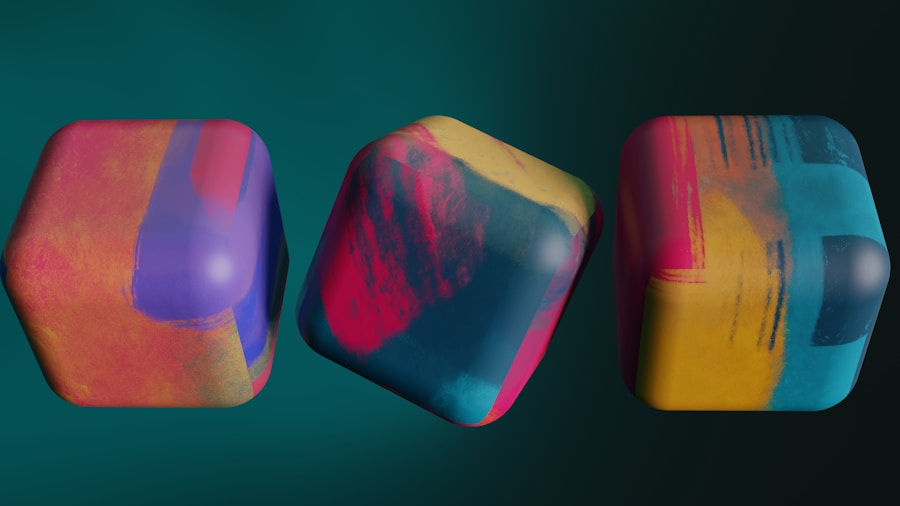Unleashing Creativity: Exploring the World of Digital Arts
Digital art has become an increasingly popular form of artistic expression in recent years, but its roots can be traced back to the 1950s when computer technology first began to emerge. Early pioneers in the field, such as John Whitney and Lillian Schwartz, used computers to create abstract and geometric images, laying the groundwork for what would eventually become the digital art movement. As technology continued to advance, so did the capabilities of digital art, leading to the development of software and hardware specifically designed for artistic purposes. The rise of the internet and social media also played a significant role in the popularization of digital art, allowing artists to share their work with a global audience and collaborate with others in ways that were previously impossible. Today, digital art encompasses a wide range of mediums, from digital painting and photography to animation and graphic design, and continues to push the boundaries of traditional artistic practices.
The evolution of digital art has been a fascinating journey, marked by technological advancements and shifts in artistic trends. From its humble beginnings as experimental computer-generated images to its current status as a mainstream form of artistic expression, digital art has come a long way. As more artists embrace digital tools and techniques, the boundaries between traditional and digital art continue to blur, leading to new and exciting possibilities for creative expression. With the continued development of technology and the growing influence of digital media, it’s clear that digital art will only continue to grow in prominence in the years to come.
The Tools of the Trade: Exploring Digital Art Software and Hardware
One of the key factors driving the popularity of digital art is the wide range of software and hardware available to artists. Digital art software such as Adobe Photoshop, Corel Painter, and Procreate offer a plethora of tools and features that allow artists to create stunning works of art with ease. These programs provide a level of flexibility and control that is simply not possible with traditional mediums, allowing artists to experiment and push the boundaries of their creativity. In addition to software, hardware such as graphics tablets and pen displays have revolutionized the way artists interact with their digital canvases, providing a more natural and intuitive drawing experience. These tools have made it easier than ever for artists to bring their visions to life in the digital realm, opening up new possibilities for artistic expression.
The accessibility of digital art tools has also democratized the creative process, allowing artists from all walks of life to explore their artistic talents. With the rise of affordable and user-friendly software and hardware, aspiring artists no longer need access to expensive materials or formal training to create stunning works of art. This has led to a surge in the number of digital artists around the world, each bringing their unique perspectives and styles to the medium. As technology continues to advance, we can expect to see even more innovative tools and features that will further expand the possibilities of digital art.
From Concept to Creation: Understanding the Digital Art Process
Creating digital art is a multi-step process that requires careful planning, technical skill, and creative vision. The first step in the process is conceptualization, where artists develop their ideas and plan out their compositions. This often involves sketching out rough drafts or creating mood boards to help solidify their vision. Once the concept is established, artists can begin the creation phase, where they use digital tools to bring their ideas to life. This may involve sketching, painting, or manipulating images to achieve the desired effect. Throughout this phase, artists must also consider factors such as color theory, composition, and lighting to ensure that their work is visually compelling.
After the initial creation phase is complete, artists may choose to refine their work through a process known as iteration. This involves making adjustments and revisions to their artwork based on feedback from peers or personal reflection. This iterative process allows artists to fine-tune their work and ensure that it meets their artistic standards. Once the artwork is complete, artists can then share it with others through various platforms such as social media, online galleries, or print publications. This final step allows artists to showcase their work to a wider audience and receive feedback from others in the artistic community.
The Role of Digital Arts in Contemporary Culture and Society
Digital art has become an integral part of contemporary culture and society, influencing everything from advertising and entertainment to education and activism. The accessibility and versatility of digital art have made it a powerful tool for communication and self-expression, allowing artists to convey complex ideas and emotions in ways that resonate with audiences around the world. In addition to its artistic value, digital art has also played a significant role in shaping popular culture, with digital imagery and design becoming ubiquitous in our daily lives. From social media graphics and video game design to virtual reality experiences, digital art has permeated nearly every aspect of modern society.
In recent years, digital art has also become a powerful tool for social and political activism, allowing artists to raise awareness about important issues and advocate for change. Through powerful imagery and multimedia presentations, digital artists have been able to shed light on topics such as environmental conservation, social justice, and mental health awareness. This has helped spark important conversations and mobilize communities around important causes. As technology continues to evolve, we can expect digital art to play an even larger role in shaping our cultural landscape and influencing societal attitudes.
Nurturing Creativity: Tips and Techniques for Digital Artists
For aspiring digital artists looking to hone their craft, there are several tips and techniques that can help them develop their skills and find their unique artistic voice. One important aspect of creating compelling digital art is understanding the fundamentals of traditional art techniques such as drawing, painting, and composition. By mastering these foundational skills, artists can create more impactful and visually engaging artwork in the digital realm. Additionally, learning how to effectively use digital art software is crucial for creating polished and professional-looking pieces. This may involve taking online tutorials or courses that teach specific software tools and techniques.
Another important aspect of nurturing creativity as a digital artist is finding inspiration from a variety of sources. Whether it’s nature, literature, or other forms of visual art, exposing oneself to different influences can help spark new ideas and perspectives. Additionally, seeking feedback from peers or mentors can provide valuable insights into one’s work and help identify areas for improvement. Finally, practicing regularly and experimenting with different styles and techniques can help artists develop their own unique artistic voice. By staying curious and open-minded, digital artists can continue to grow and evolve in their craft.
Exploring Different Mediums: Animation, Graphic Design, and More
Digital art encompasses a wide range of mediums beyond just painting and drawing, including animation, graphic design, 3D modeling, and more. Each of these mediums offers unique opportunities for creative expression and presents its own set of challenges for artists to overcome. Animation, for example, requires a deep understanding of movement and timing in addition to artistic skill, while graphic design demands a keen eye for typography and layout. 3D modeling involves creating three-dimensional objects or environments using specialized software tools, requiring a strong understanding of form and space.
Each of these mediums has its own distinct set of tools and techniques that artists must master in order to create compelling work. For example, animators may use software such as Adobe After Effects or Toon Boom Harmony to bring their characters to life through movement and sound. Graphic designers often rely on programs like Adobe Illustrator or InDesign to create visually striking layouts for print or web-based projects. 3D modelers may use software such as Blender or Autodesk Maya to sculpt detailed characters or environments for use in video games or film. By exploring these different mediums, digital artists can expand their skill set and find new avenues for creative expression.
The Future of Digital Arts: Trends and Innovations to Watch out for
As technology continues to advance at a rapid pace, we can expect several key trends and innovations that will shape the future of digital arts. One such trend is the integration of artificial intelligence (AI) into digital art tools, allowing for more intuitive and automated creative processes. AI-powered software can assist artists with tasks such as color correction, image manipulation, or even generating entire compositions based on user input. This has the potential to streamline workflows and open up new possibilities for artistic exploration.
Another trend on the horizon is the continued development of virtual reality (VR) as a platform for creating immersive digital art experiences. VR technology allows artists to create three-dimensional environments that users can explore in real-time, blurring the lines between traditional art forms and interactive experiences. This has already led to the emergence of VR-based art installations and exhibitions that push the boundaries of what is possible in the realm of digital art.
Additionally, we can expect continued advancements in hardware technology that will further enhance the capabilities of digital art tools. This may include improvements in graphics tablets with higher levels of pressure sensitivity or more accurate pen tracking, as well as advancements in display technology that provide more vibrant colors and higher resolutions for creating stunning visual artwork.
In conclusion, digital art has come a long way since its inception in the 1950s, evolving from experimental computer-generated images into a mainstream form of artistic expression. The rise of digital art software and hardware has democratized the creative process, allowing artists from all walks of life to explore their talents without barriers. The role of digital arts in contemporary culture and society is undeniable, influencing everything from advertising and entertainment to activism and social change. For aspiring digital artists looking to hone their craft, there are several tips and techniques that can help them develop their skills and find their unique artistic voice.
As technology continues to evolve at a rapid pace, we can expect several key trends and innovations that will shape the future of digital arts. From AI-powered creative tools to advancements in virtual reality technology, the possibilities for artistic exploration are endless. With these exciting developments on the horizon, it’s clear that digital art will continue to push the boundaries of traditional artistic practices in the years to come.






